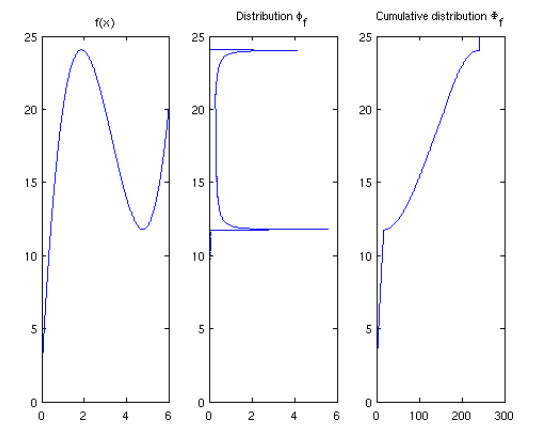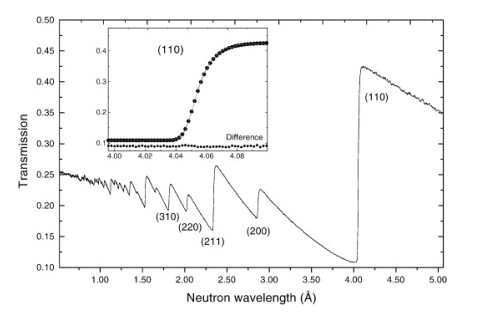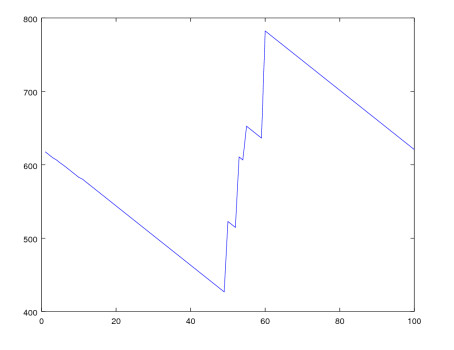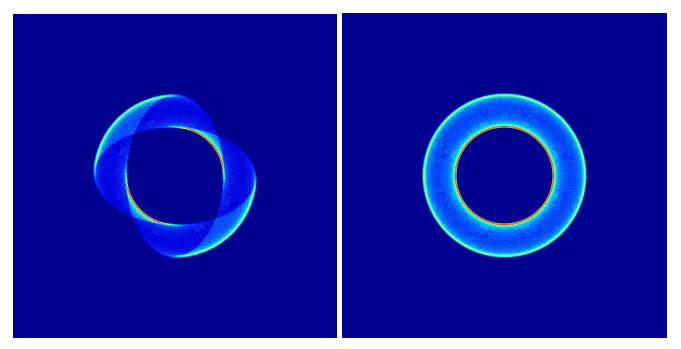In many tomographic imaging problems the data consist of integrals along lines or curves. Increasingly we encounter "rich tomography" problems where the quantity imaged is higher dimensional than a scalar per voxel, including vectors tensors and functions. The data can also be higher dimensional and in many cases consists of a one or two dimensional spectrum for each ray. In many such cases the data contain not just integrals along rays but the distribution of values along the ray. If this is discretized into bins we can think of this as a histogram. In this paper we introduce the concept of "histogram tomography". For scalar problems with histogram data this holds the possibility of reconstruction with fewer rays. In vector and tensor problems it holds the promise of reconstruction of images that are in the null space of related integral transforms. For scalar histogram tomography problems we show how bins in the histogram correspond to reconstructing level sets of function, while moments of the distribution are the x-ray transform of powers of the unknown function. In the vector case we suggest a reconstruction procedure for potential components of the field. We demonstrate how the histogram longitudinal ray transform data can be extracted from Bragg edge neutron spectral data and hence, using moments, a non-linear system of partial differential equations derived for the strain tensor. In x-ray diffraction tomography of strain the transverse ray transform can be deduced from the diffraction pattern the full histogram transverse ray transform cannot. We give an explicit example of distributions of strain along a line that produce the same diffraction pattern, and characterize the null space of the relevant transform.
1.
Introduction
The theory of set-valued analysis plays a key role in various branches of mathematics because of its applications in areas such as control theory, game theory, biomathematics, qualitative physics, viability theory, and so on. In particular, the idea of multivalued mappings in fixed point theory was initiated by von Neumann in the study of game theory. On the other hand, the notion of multivalued mappings in metric fixed point theory was brought up by Nadler [28] who used the concept of Hausdorff metric to obtain a generalization of Banach contraction principle. Banach fixed point theorem (see [7]) is the earliest, simple and versatile classical result for single-valued mappings in fixed point theory with metric space structure. More than a handful of literature embrace applications and extensions of this principle from different perspectives, for example, by weakening the hypotheses, employing different mappings and various forms of quasi and pseudo-metric spaces. Meanwhile, a number of generalizations in diverse frames of Nadler's fixed point result have also been investigated by several authors; see, for example, [1,5,17,19,27] and references therein.
The analysis of new spaces and their properties have been an interesting topic among current mathematical research. In this direction, the notion of b-metric spaces is presently thriving. The idea commenced with the work of Bakhtin [6] and Bourbaki [9]. Thereafter, Czerwik [13] gave a postulate which is weaker than the classical triangle inequality and formally established a b-metric space with a view of improving the Banach fixed point theorem. Meanwhile, the notion of b-metric spaces is gaining fast generalizations. For a recent short survey on basic concepts and results in fixed point theory in the framework of b-metric spaces, we refer the interested reader to Karapinar [25]. On similar development, one of the active branches of fixed point theory that is also currently drawing attentions of researchers is the study of hybrid contractions. The concept has been viewed in two directions, viz, first, hybrid contraction deals with contractions involving both single-valued and multivalued mappings and the second merges linear and nonlinear contractions. Recently, Karapinar and Fulga [23] inaugurated a novel notion of b-hybrid contraction in the framework of b-metric space and studied the existence and uniqueness of fixed points for such contractions. Their ideas merged several existing results in the corresponding literature. Similarly, by using the concept of α-admissible mapping due to Samet [33], Chifu and Karapinar [12] improved the main result in [23] by combining the idea of simulation functions of Khojasteh et al. [26]. Interestingly, hybrid fixed point theory has potential applications in functional inclusions, optimization theory, fractal graphics, discrete dynamics for set-valued operators and other areas of nonlinear functional analysis.
In this work, we introduce two notions, admissible multivalued hybrid Z-contractions and multivalued hybrid Z-contractions in the framework of b-metric spaces and establish sufficient conditions for existence of fixed points for such contractions. A few consequences of our main theorem are pointed out by using variants of simulation functions. Overall, the ideas presented herein unify and complement several significant fixed point theorems in the setting of both single-valued and set-valued mappings involving either linear or nonlinear contractions. Nontrivial illustrative examples are provided to authenticate the hypotheses of our main result. From application perspective, some fixed point theorems of b-metric spaces endowed with partial ordering and graph are derived and solvability conditions of nonlinear matrix equations are investigated. In particular, this paper complements the main results of Branciari [11], Chifu and Karapinar [12], Czerwik [13], Jachymski [22], Karapinar and Agarwal [23], Karapinar and Fulga [24], Khojasteh [26], Nadler [28], Rhoades [31], Samet [33] and a few others in the comparable literature.
2.
Preliminaries
In this section, we collect important notation, useful definitions and basic results coherent with the literature. Hereafter, we denote by N, R+ and R the sets of natural numbers, non-negative reals and real numbers, respectively.
Czerwik [13] formally defined the notion of a b-metric space as follows: Let X be a nonempty set and η≥1 be a constant. Suppose that the mapping μ:X×X⟶R+ satisfies the following conditions for all x,y,z∈X:
(i) μ(x,y)=0 if and only if x=y (self-distancy);
(ii) μ(x,y)=μ(y,x) (symmetry);
(iii) μ(x,y)≤η[μ(x,z)+μ(z,y)] (weighted triangle inequality).
Then, the tripled (X,μ,η) is called a b-metric space. It is noteworthy that every metric is a b-metric with the parameter η=1. Also, in general, a b-metric is not a continuous functional. Hence, the class of b-metric is larger than the class of classical metric.
Example 2.1. [8] Let X=lp(R) with 0<p<1, where
Define μ:X×X⟶R+ as
where x={xn}n∈N and y={yn}n∈N. Then, μ is a b-metric with parameter η=21p and hence (X,μ,21p) is a b-metric space.
Example 2.2. [18] Let X=N∪{∞} and μ:X×X⟶R+ be defined by
Then, (X,μ,η) is a b-metric space with parameter η=3, but μ is not a continuous functional.
Definition 2.3. [10] Let (X,μ,η) be a b-metric space. A sequence {xn}n∈N is said to be:
(i) convergent if and only if there exists x∈X such that xn⟶x as n⟶∞, and we write this as limn⟶∞μ(xn,x)=0.
(ii) Cauchy if and only if μ(xn,xm)⟶0 as n,m⟶∞.
(iii) complete if every Cauchy sequence in X is convergent.
In a b-metric space, the limit of a sequence is not always unique. However, if a b-metric is continuous, then every convergent sequence has a unique limit.
Definition 2.4. [10] Let (X,μ,η) be a b-metric space. Then, a subset A of X is called:
(i) compact if and only if for every sequence of elements of A, there exists a subsequence that converges to an element of A.
(ii) closed if and only if for every sequence {xn}n∈N of elements of A that converges to an element x, we have x∈A.
Definition 2.5. A nonempty subset A of X is called proximal if, for each x∈X, there exists a∈A such that μ(x,a)=μ(x,A).
Throughput this paper, we denote by N(X), CB(X), Pr(X), and K(X), the family of nonempty subsets of X, the set of all nonempty closed and bounded subsets of X, the family of all nonempty proximal subsets of X, and the class of nonempty closed and compact subsets of X, respectively.
Let (X,μ,η) be a b-metric space. For A,B∈K(X), the function ℵb:K(X)×K(X)⟶R+, defined by
is called generalized Hausdorff b-metric on K(X) induced by the b-metric μ, where
Remark 2.6. Since every compact set is proximal and every proximal set is closed, we have the inclusions:
Definition 2.7. Let (X,μ,η) be a metric space. A set-valued mapping T:X⟶N(X) is called a multi-valued mapping. A point u∈X is said to be a fixed point of T if u∈Tu.
Definition 2.8. Let X be a nonempty. A multivalued mapping T:X⟶N(X) is said to be α-admissible with respect to a function α:X×X⟶R+, if for each x∈X and y∈Tx with α(x,y)≥1, we have α(y,z)≥1 for all z∈Ty.
Not long ago, a family of auxiliary functions under the name simulation functions was introduced by Khojasteh et al. [26] to unify various types of contractions.
Definition 2.9. [26] A simulation function is a mapping ξ:R+×R+⟶R satisfying the following axioms:
(i) ξ(0,0)=0;
(ii) ξ(t,s)<t−s for all t,s>0;
(iii) if {tn}n≥1 and {sn}n≥1 are sequences in (0,∞) such that limn⟶∞tn=limn⟶∞sn>0, then limn⟶∞supξ(tn,sn)<0.
We denote the family of simulation functions by Z.
Example 2.10. [26] Let ξi:R+×R+⟶R(i=i,2,3) be defined by
(i) ξ1(t,s)=τ(s)−ϕ(t) for all t,s∈R+, where τ,ϕ:R+⟶R+ are continuous functions such that τ(t)=ϕ(t)=0 if and only if t=0 and τ(t)<t≤ϕ(t) for all t>0.
(ii) ξ2(t,s)=s−Λ(t,s)Γ(t,s)t for all t,s∈R+, where Λ,Γ:R+⟶(0,∞) are two continuous functions with respect to each variable such that Λ(t,s)>Γ(t,s) for all t,s>0.
(iii) ξ3(t,s)=s−ψ(s)−t for all t,s∈R+, where ψ:R+⟶R+ is a continuous function such that ψ(0)=0 if and only if t=0.
Then, ξi (i=1,2,3) are simulation functions.
For more examples of simulation functions, see [2,4,20].
Definition 2.11. [26] Let (X,μ) be a metric space. A mapping T:X⟶X is called a Z-contraction with respect to ξ∈Z, if
The following is the main result in [26].
Theorem 2.12. [26] Every Z-contraction on a complete metric space has a unique fixed point.
An example of a Z-contraction is the Banach contraction which can be obtained by setting ξ(t,s)=ρs−t, where ρ∈[0,1) in (2.1).
The idea of comparison function was initiated by Rus [32] and it has been studied by several researchers in order to obtain more general forms of contraction mappings.
Definition 2.13. [32] A mapping φ:R+⟶R+ is said to be a comparison function if it is nondecreasing and φn(t)⟶0 as n⟶∞ for all t≥0.
Example 2.14. The following functions φ:R+⟶R+ are comparison functions:
(i) φ(t)=ςt for all t≥0, where ς∈(0,1).
(ii) φ(t)=tt+1 for each t≥0.
Definition 2.15. [23,32] A nondecreasing function φ:R+⟶R+ is called:
(i) a c-comparison function if φn(t)⟶0 as n⟶∞ for every t∈R+;
(ii) a b-comparison function if there exist k0∈N, λ∈(0,1) and a convergent non-negative series ∑∞n=1xn such that ηk+1φk+1(t)≤ληkφk(t)+xk, for η≥1,k≥k0 and any t≥0, where φn denotes the nth iterate of φ.
Denote by Ωb, the family of functions φ:R+⟶R+ satisfying the following conditions:
(i) φ is a b-comparison function;
(ii) φ(t)=0 if and only if t=0.
(iii) φ is continuous.
Remark 2.16. A b-comparison function is a c-comparison function when η=1. Moreover, it can be shown that a c-comparison function is a comparison function, but the converse is not always true. Notice that in Example 2.13, (i) is a c-comparison function. But, (ii) is not a c-comparison function.
Lemma 2.17. [32] For a comparison function φ:R+⟶R+, the following properties hold:
(i) each iterate φn,n∈N is also a comparison function;
(iii) φ(t)<t for all t>0.
Lemma 2.18. [32] Let φ:R+⟶R+ be a b-comparison function. Then, the series ∑∞k=0ηkφk(t) converges for every t∈R+.
Remark 2.19. [23] In Lemma 2.18, every b-comparison function is a comparison function and thus, in Lemma 2.17, every b-comparison function satisfies φ(t)<t.
Lemma 2.20. ([34]) Let (X,σ,η) be a b-metric space. For A,B∈K(X) and x,y∈X, the following conditions hold:
(i) μ(x,B)≤ℵb(A,B) for any x∈A.
(ii) μ(x,B)≤μ(x,b) for any b∈B.
(iii) μ(x,A)≤η[μ(x,y)+μ(y,A)].
(i v) μ(x,A)=0⟺x∈A.
(v) ℵb(A,B)=0⟺A=B.
(vi) ℵb(A,B)=ℵb(B,A).
(vii) ℵb(A,B)≤η[ℵb(A,C)+ℵb(C,B)].
3.
Main results
The concepts of admissible multivalued hybrid Z-contractions and multivalued hybrid Z-contractions are introduced as follows.
Definition 3.1. Let (X,μ,η) be a b-metric space. A set-valued map T:X⟶K(X) is called an admissible multivalued hybrid Z-contraction with respect to ξ∈Z, if there exists a function α:X×X⟶R+ and a b-comparison function φ:R+⟶R+ such that
for all x,y∈X, where
and
with r≥0 and ai≥0(i=1,2,3,4,5) such that ∑5i=1ai=1.
Remark 3.2.
(i) In Definition 3.1, if α(x,y)=1, then T is called a multivalued hybrid Z-contraction with respect ξ∈Z.
(ii) If T is an admissible multivalued hybrid Z-contraction with respect to ξ∈Z, then for all x,y∈X,
To prove the assertion (ii), suppose x≠y, then, μ(x,y)>0. If Tx=Ty, we have α(x,y)ℵb(Tx,Ty)=0<φ(MrT(x,y)). Otherwise, ℵb(Tx,Ty)>0. If α(x,y)=0, then (3.2) holds trivially. So, assume that α(x,y)>0, an using (ii) in Definition 2.9, we obtain
The following definition is very significant in the proof of our results.
Definition 3.3. Let (X,μ,η) be a b-metric space. A multivalued mapping T:X⟶K(X) is said to be ℵ-continuous at u∈X, if for any sequence {xn}n≥1 in X,
We say that T is ℵ-continuous if it is continuous at each point of X.
Definition 3.3 can be reformulated as follows:
T is said to be ℵ-continuous at a point u, if for every ϵ>0, there exists a δ>0 such that
Example 3.4. Let X=R and μ(x,y)=|x−y|2 for all x,y∈X. Then, (X,μ,η=2) is a b-metric space. Define T:X⟶K(X) by Tx=[x,x+5] for all x∈X. Then, ℵb(Tx,Ty)=|x−y|2. For any ϵ>0, take δ=ϵ7. Then, μ(x,y)<δ implies ℵb(Tx,Ty)<ϵ. Consequently, T is ℵ-continuous.
Theorem 3.5. Let (X,μ,η) be a complete b-metric space and T:X⟶K(X) be an admissible multivalued hybrid Z-contraction with respect to ξ∈Z. Suppose also that the following conditions are satisfied:
(i) T is an α-admissible multivalued mapping;
(ii) there exists x0∈X and x1∈Tx0 such that α(x0,x1)≥1;
(iii) T is ℵ-continuous;
(i v) Tx is proximal for each x∈X.
Then, T has at least one fixed point in X.
Proof. By Condition (ii), there exists x0∈X and x1∈Tx0 such that α(x0,x1)≥1. If x0=x1 (or x0=x=y=x1), then from (3.1), we have
which is equivalent to
Then, for r>0, using the proximality of T, we get
Similarly, B(x0,x1)=0. Hence, (3.3) becomes α(x0,x1)ℵb(Tx0,Tx1)≤φ(0)=0, which implies that Tx0=Tx1. It follows directly that x1∈Tx0=Tx1; that is, x1 is a fixed point of T. So, hereafter, we assume that x0≠x1 and x1∉Tx1 so that μ(x1,Tx1)>0. Since Tx1∈K(X) and x1∈Tx0, there exists x2∈Tx1 with x1≠x2 such that
Setting x=x0 and y=x1 in (3.1), gives
which can also be written as
Combining (3.4) and (3.5), yields
Given that T is α-admissible and x2∈Tx1, we have α(x1,x2)≥1. If x2∈Tx2, then taking x1=x2 (or x1=x=y=x2), as in previous steps, we find directly that x2 is a fixed point of T. So, suppose that x2∉Tx2 so that μ(x2,Tx2)>0. Since Tx1,Tx2∈K(X) and x2∈Tx1, there exists a point x3∈Tx2 with x2≠x3 such that
Putting x=x1 and y=x2 in (3.1), we get
which is equivalent to
From (3.7) and (3.8), we have
Continuing with this iteration, we generate a sequence {xn}n≥1 in X with xn∉Txn,xn+1∈Txn, α(xn,xn+1)≥1 such that
Now, we investigate (3.10) under the following cases:
Case 1: r>0. In this case, from (3.1), using the proximality of T, we have
From (3.10) and (3.11), we get
Assume that μ(xn−1,xn)≤μ(xn,xn+1), then, since φ is nondecreasing and noting that a1+a2+a3+a4≤1, from (3.12), we have
a contradiction. Consequently, (3.12) becomes
Now, let m,n∈N with m>n. Then, by triangular inequality in (X,μ,η), we have
Since φ is a b-comparison function, it follows from Lemma 2.18 that the series ∑∞i=0φi(μ(x0,x1)) is convergent. Setting Sk=∑ki=1φi(μ(x0,x1)), (3.14) can be written as
Letting n,m⟶∞ in (3.15), we obtain μ(xn,xm)⟶0, which proves that {xn}n≥1 is a Cauchy sequence in X. Completeness of this space implies that there exists u∈X such that
Now, we show that u∈Tu. Using the triangle inequality in X, we have
Since T is ℵ-continuous, passing to limit as n⟶∞ in (3.17), we have μ(u,Tu)=0, which implies that u∈Tu.
Case 2: r=0. For this, take x=xn−1∈Txn and y=xn∈Txn+1 in (3.1), then, by proximality of T, we have
It is well-known that for any p,q,l>0,
Applying (3.19) to (3.18), gives
Recall that from (3.1), we get
which is equivalent to
Assume that μ(xn−1,xn)≤μ(xn,xn+1), then (3.20) becomes
Since φ is nondecreasing, from (3.22) and (3.21), we have
a contradiction. Therefore, (3.21) yields
Following the same procedures as in the Case r>0, it follows from (3.23) that {xn}n≥1 is a Cauchy sequence in X, and the completeness of this space implies that there exists u∈X such that
To show that u∈Tu, consider:
Since T is ℵ-continuous, letting n⟶∞ in (3.25), and using (3.24), we obtain μ(u,Tu)=0, which implies that u∈Tu.
Theorem 3.6. Let (X,μ,η) be a complete b-metric space and T:X⟶K(X) be a multivalued mapping satisfying the following conditions:
(i) T is an α-admissible multivalued mapping;
(ii) there exists x0∈X and x1∈Tx0 such that α(x0,x1)≥1;
(iii) T is ℵ-continuous;
(i v) Tx is proximal for each x∈X.
Assume further that there exist ξ∈Z, φ∈Ωb and a function α:X×X⟶R+ such that for all x,y∈X,
where A(x,y) is as given in Definition 3.1.
Then, T has at least one fixed point in X.
The proof follows from Case 1 of Theorem 3.5.
Remark 3.7. It is necessary to remind the reader that Theorems 3.5 and 3.6 are invalid if we take CB(X) instead of K(X) (for example, see [28,Theorem 5]).
Example 3.8. Let X=[1,∞) and μ(x,y)=|x−y|2 for all x,y∈X. Then, (X,μ,η=2) is a complete b-metric space. Note that (X,μ,η=2) is not a metric space, since for x=1,y=4 and z=3, we have
Define T:X⟶K(X) by
and the functions α:X×X⟶R+, φ:R+⟶R+ by
φ(t)=t2 for all t≥0. Also, take ξ(t,s)=18s−t for all s,t∈R+. Clearly, ξ∈Z and φ∈Ωb. Now, we show that (3.26) is satisfied under the following cases:
Case 1: x,y∈[1,3). For this, Tx=Ty={4} and so, ℵb(Tx,Ty) = 0 for all x,y∈X. Hence,
Case 2: x=4 and y=5. For this, we have
ℵb(T4,T5)=16, and
By taking a1=a2=12 and a3=a4=a5=0 in (3.28), we get
Therefore, (3.27) becomes
Moreover, it is obvious that T is α-admissible, Tx is proximal and ℵ-continuous for each x∈X. Consequently, all the assumptions of Theorem 3.6 are satisfied. We can see that T has many fixed points in X.
4.
Consequences
In this section, we show that several interesting fixed point results can be deduced from our main theorem, especially by availing variants of simulation functions.
Corollary 4.1. Let (X,μ,η) be a complete b-metric space and T:X⟶K(X) be a multivalued mapping satisfying the condition:
for all x,y∈X, where φ∈Ωb and α:X×X⟶R+ is a function. Assume also that the following conditions hold:
(i) T is an α-admissible multivalued mapping;
(ii) there exists x0∈X and x1∈Tx0 such that α(x0,x1)≥1;
(iii) T is ℵ-continuous;
(i v) Tx is proximal for each x∈X.
Then, there exists u∈X such that u∈Tu.
Proof. Set ξ:=ξ(t,s)=φ(s)−t for all t,s∈R+ in Theorem 3.5. Then, (4.1) follows easily. Note that φ(s)−t∈Z. Consequently, Theorem 3.5 can be applied to find u∈X such that u∈Tu.
Corollary 4.2. (Rhoades type [31]) Let (X,μ,η) be a complete b-metric space and T:X⟶K(X) be a multivalued mapping satisfying the following:
for all x,y∈X, where φ:R+⟶R+ is lower semicontinuous and φ−1(0)={0}. Also, assume that the following conditions hold:
(i) T is ℵ-continuous;
(ii) Tx is proximal for each x∈X.
Then, there exists u∈X such that u∈Tu.
Proof. In Theorem 3.5, take ξ:=ξ(t,s)=s−φ(s)−t for all t,s∈R+ and α(x,y)=1 for all x,y∈X. Then (4.2) follows. Notice that s−φ(s)−t∈Z. Hence, by Theorem 3.5, T has a fixed point in X.
Corollary 4.3. (Nadler's type ([28])) Let (X,μ,η) be a complete b-metric space and T:X⟶K(X) be a multivalued mapping satisfying:
for all x,y∈X, where λ∈(0,1). Assume also that the following assertion hold:
(i) T is ℵ-continuous;
(ii) Tx is proximal for each x∈X.
Then, T has a fixed point in X.
Proof. Take α(x,y)=1, ξ:=ξ(t,s)=λs−t for all s,t∈R+ and put φ(t)=λt for all t≥0, with λ∈(0,1) in Theorem 3.5. Then (4.3) is obtainable. Notice that λs−t∈Z. Hence, it follows from Theorem 3.5 that there exists u∈X such that u∈Tu.
Corollary 4.4. (Branciari's type [11]) Let (X,μ,η) be a complete b-metric space and T:X⟶K(X) be a multivalued mapping satisfying:
for all x,y∈X, where ω:R+⟶R+ is a function such that ∫γ0ω(t)μt>0 for each γ>0. Also, assume that the following conditions hold:
(i) T is ℵ-continuous;
(ii) Tx is proximal for each x∈X.
Then, there exists u∈X such that u∈Tu.
Proof. Put α(x,y)=1 and ξ:=ξ(t,s)=s−∫t0ω(u)μu for all s,t∈R+. Then (4.4) follows easily. Note that ξ∈Z. Thus, by Theorem 3.5, T has a fixed point in X.
Corollary 4.5. Let (X,μ,η) be a complete b-metric space and T:X⟶K(X) be a multivalued mapping satisfying:
for all x,y∈X with ℵb(Tx,Ty)>0, where Λ,Γ:R+⟶R+ are continuous functions with respect to each arguments such that Λ(t,s)>Γ(t,s) for all t,s>0. Assume further that the following axioms hold:
(i) T is ℵ-continuous;
(ii) Tx is proximal for each x∈X.
Then, T has a fixed point in X.
Proof. Setting ξ:=ξ(t,s)=s−Λ(t,s)Γ(t,s)t for all t,s∈R+ and α(x,y)=1 in Theorem 3.5, we obtain (4.5). Observe that ξ∈Z. Consequently, Theorem 3.5 can be employed to locate u∈X such that u∈Tu.
Corollary 4.6. Let (X,μ,η) be a complete b-metric space and Θ:X⟶X be a single-valued mapping satisfying the condition:
for all x,y∈X, where φ∈Ωb and [A(x,y)]1r is as given in Definition 3.1. Then, there exists u∈X such that Θu=u.
Proof. Take ξ:=ξ(t,s)=φ(s)−t in Theorem 3.5, then ξ∈Z and (4.6) follows directly. Then, consider a multivalued mapping T:X⟶K(X) defined by Tx={Θx} for all x∈X. Clearly, {Θx}∈K(X) for each x∈X. Hence, Theorem 3.5 can be applied with α(x,y)=1 for all x,y∈X, to find u∈X such that u∈Tu={Θu}; which further implies that u=Θu.
Remark 4.7. It is obvious that we can obtain more consequences of our results by considering other variants of simulation functions. Also, by taking the parameter η=1, all the established results herein reduce to their classical metric space equivalence. In particular, by following the idea of Corollary 4.6, single-valued versions of the rest results presented here can also be pointed out.
5.
Applications
5.1. Fixed point results in ordered b-metric spaces
Fixed point theory in partially ordered sets is one of the highly useful branches of fixed point theory with enormous applications in areas such as matrix equations, boundary value problems, and many more. For some articles in this direction, see [3,29,30]. In this section, our main result is applied to deduce its analogue in the framework of ordered b-metric space. Indeed, a b-metric space can be equipped with a partial ordering; that is, if (X,⪯) is a partially ordered set, then (X,μ,η,⪯) is known as an ordered b-metric space. Accordingly, we say that x,y∈X are comparable if either x⪯y or y⪯x holds. Let L,M⊆X, then L⪯M if for each l∈L, there exists m∈M such that l⪯m.
Theorem 5.1. Let (X,μ,η,⪯) be a complete ordered b-metric space and T:X⟶K(X) be a multivalued mapping. Suppose that there exist ξ∈Z, φ∈Ωb and a function α:X×X⟶R+ such that
for all x,y∈X with Tx⪯Ty. Also, assume that the following conditions hold:
(i) there exists x0∈X and x1∈Tx0 such that Tx⪯Ty;
(ii) for each x∈X and y∈Tx with Tx⪯Ty, we have Ty⪯Tz for all z∈Ty;
(iii) T is ℵ-continuous;
(i v) Tx is proximal for each x∈X.
Then, there exists u∈X such that u∈Tu.
Proof. Let the function α:X×X⟶R+ be defined by
Obviously, T is an α-admissible multivalued mapping. In fact, take x∈X and y∈Tx with α(x,y)≥1, then Tx⪯Ty; and by hypothesis (ii), Ty⪯Tz for each z∈Ty. It follows that α(y,z)≥1 for all z∈Ty. Moreover, by inequality (5.1), we find that T is an admissible multivalued hybrid Z-contraction with respect to z∈Z. Consequently, all the axioms of Theorem 3.5 are satisfied. Hence, T has a fixed point in X.
5.2. Fixed point results for graphic contractions
The notion of contraction mapping on a metric space with a graph was introduced by Jachymski [22]. In this subsection, we deduce a fixed point result in the setting of b-metric space endowed with a graph. Following [22], let (X,μ,η) be a metric space and D denotes the diagonal of the Cartesian product X×X. Consider a directed graph G such that the set VG of its vertices coincides with X, and the set EG of its edges contains all loops, that is, (x,x)∈EG for every x∈VG (or D⊆EG). We presume that G has no parallel edges so that it can be identified with the pair (VG,EG). Furthermore, G is taken as a weighted graph (for details, see [22]) by allocating to each edge the distance between its vertices. If x and y are vertices in a graph G, then a path from x to y of length l(l∈N) is a sequence {xi}li=0 of l+1 vertices such that x=x0,xl=y and (xn−1,xn)∈EG for i=1,⋯,l. A graph G is connected if there is a path between any two of its vertices. For some fixed point results with graphic contractions, we refer [14,15,22]. Hereafter, a nonempty set X endowed with a graph G shall be written as (X,G). First, we introduce the following auxiliary concepts.
Definition 5.2. Let (X,μ,η,G) be a b-metric space. A multivalued mapping T:X⟶K(X) is said to be G-continuous at u∈X, if given u∈X and a sequence {xn}n≥1 such that μ(xn,u)⟶0 as n⟶∞ and (xn−1,xn)∈EG for all n∈N, we have ℵb(Txn,Tu)⟶0 as n⟶∞, for all (Txn−1,Tu)∈EG, with xn∈Txn−1. T is G-continuous if it is G-continuous at each point of X.
Definition 5.3. Let (X,G) be a nonempty set. We say that a multivalued mapping T:X⟶K(X) is edge-preserving, if for all x,y∈X, (x,y)∈EG implies (Tx,Ty)⊆EG.
Definition 5.4. Let (X,μ,η,G) be a metric space. A subset Δ of X is called proximal, if for each x∈X, there exists κ∈Δ with (x,κ)∈EG such that μ(x,κ)=μ(x,Δ).
Now, we present the main result of this subsection as follows.
Theorem 5.5. Let (X,μ,η,G) be a complete b-metric space and T:X⟶K(X) be a multivalued mapping. Assume that there exist ξ∈Z, φ∈Ωb and a function α:X×X⟶R+ such that
for all x,y∈X. Moreover, suppose also that the following assertions hold:
(i) for all x,y∈X, (x,y)∈EG implies (Tx,Ty)⊆EG;
(ii) there exists x0∈X and x1∈Tx0 with (x0,x1)∈EG;
(iii) for each x∈X and y∈Tx with (Tx,Ty)⊆EG, we have (Ty,Tz)⊆EG for all z∈Ty;
(i v) T is G-continuous;
(v) Tx is proximal for each x∈X.
Then, there exists u∈X such that u∈Tu.
Proof. Define the function α:X×X⟶R+ by
First, we show that T is an admissible multivalued mapping. Let x∈X and y∈Tx with α(x,y)≥1, then (x,y)∈EG and, by Condition (i), (Tx,Ty)∈EG; hence, from (iii), (Tx,Tz)∈EG for each z∈Ty. Therefore, α(y,z)≥1, which implies that (y,z)∈EG. So, combining the inequality (5.2), we have that T is an admissible multivalued hybrid Z-contraction with respect to ξ∈Z. Finally, it is easy to see that conditions (iv) and (v) imply the hypotheses (iii) and (iv), respectively of Theorem 3.5. Consequently, all the assertions of Theorem 3.5 are satisfied and hence T has a fixed point in X.
6.
Existence results of nonlinear matrix equations
It has always been a worthwhile research to investigate an adequate technique to solve matrix equations because the existence of solutions of matrix equations arises in various applications such as in stochastic filtering, system theory, dynamic programming, control theory, statistics, ladder networks, and a host of other branches of sciences. For some results on this line, we refer [16,21].
Let ϝn,Υn and Ξn denote the set of all n×n Hermitian, positive definite and positive semi-definite matrices, respectively. ℸ>0 (respectively, ℸ≥ 0) means that ℸ∈Υn (respectively, ℸ∈Ξn). Let the spectral norm of a matrix ℶ be defined by
where ϱ∗(ℶℶ∗) represents the greatest eigenvalue of the matrix ℶ∗ℶ. The Ky Fan norm is defined as
where {Ξ1(ℶ),Ξ2(ℶ),⋯,Ξn(ℶ)} is the set of singular values of ℶ.
Consider the nonlinear matrix equation:
where θ∈Υn, ℶi(i=1,2,⋯,m) are n×n matrices and β is a single-valued mapping.
Theorem 6.1. Let β:ϝn⟶ϝn maps Υn into Υn and θ∈Υn. Suppose also that the following conditions are satisfied:
(i) there exists a constant ℧∈(0,12) such that ∑mi=1ℶiℶ∗i≤℧2In, where In is an n×n matrix;
(ii) ∑mi=1ℶ∗iβ(θ)ℶ>0;
(iii) for all ∇,△∈ϝn,
where
where r>0 and ai≥0(i=1,2,3,4,5) such that ∑5i=1ai=1.
Then, (6.1) has a solution in Υn.
Proof. Let μ:ϝn×ϝn⟶R be defined by
for all ∇,△∈ϝn. Then, (ϝn,μ,η=2) is a complete b-metric space. Consider the mappings σ:ϝn⟶ϝn and φ:R+⟶R+, respectively defined by
and φ(t)=℧2t for all t≥0 and ℧∈(0,12). Then, φ∈Ωb. Also, notice that the solution of (6.1) is a fixed point of (6.3).
Let ∇,△∈ϝn with ∇≠△ so that μ(∇,△)>0. Then, we have
From (6.4), we have ‖σ(∇)−σ(△)‖21≤℧2∑μ(∇,△), which implies that
Hence, all the assertions of Corollary 4.6 are satisfied. Consequently, (6.1) has a solution.
Example 6.2. Consider the nonlinear matrix equation:
where θ,ℶ1 and ℶ2 are respectively given by
Also, let the mappings β,σ:ϝ3⟶ϝ3 be respectively defined by
Then, by taking ℧=25, we find that all the hypotheses of Theorem 6.2 hold.
7.
Conclusion
It is well-known that in some abstract spaces, the triangle inequality does not hold. But, by multiplying the constant η≥1 on the right-hand side of the triangle inequality, one can obtain a more useful abstract structure, now called a b-metric space in the literature. Following this orientation, in this work, two new ideas, admissible multivalued hybrid Z-contractions and multivalued hybrid Z-contractions in the framework of b-metric spaces using generalized Hausdorff metric are initiated. The established concept herein unifies several results in one theorem. A few of these special cases are pointed out. Thereafter, to indicate some applications of our results, a few fixed point theorems in the setting of fixed point results of b-metric spaces endowed with partial ordering and graph are deduced and solvability conditions of nonlinear matrix equations are investigated.
Acknowledgments
This project was funded by the Deanship of Scientific Research (DSR), King Abdulaziz University, Jeddah, Saudi Arabia under grant no. (KEP-66-130-38). The authors, therefore, acknowledge with thanks DSR technical and financial support.
Conflict of interest
The authors declare that they have no competing interests.


















 DownLoad:
DownLoad: